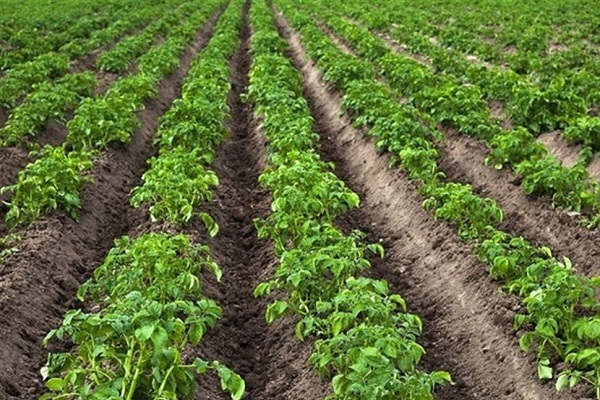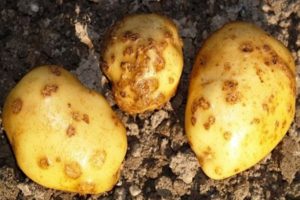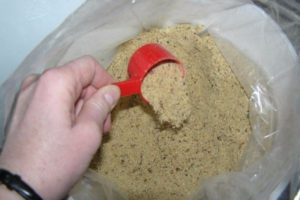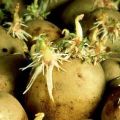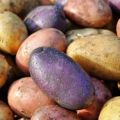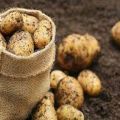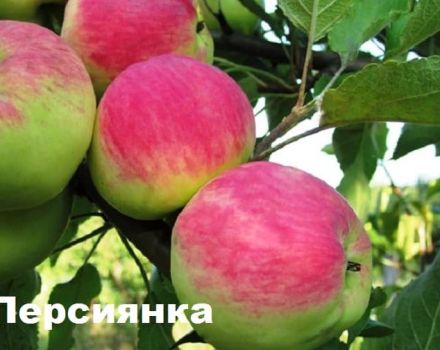Description of the Jelly potato variety, cultivation features and yield
One of the most popular varieties planted in the country is the Jelly potato. It was bred by Dutch breeders (EUROPLANT PFLANZENZUCHT GMBH). This variety was included in the State Register of Selection Achievements Recommended for Cultivation in 2005. Such potatoes are intended for table use, they have good taste.
Jelly is grown mainly in the central regions, but it is also cultivated in other regions. It is planted both in the fields of large farms and in personal plots.
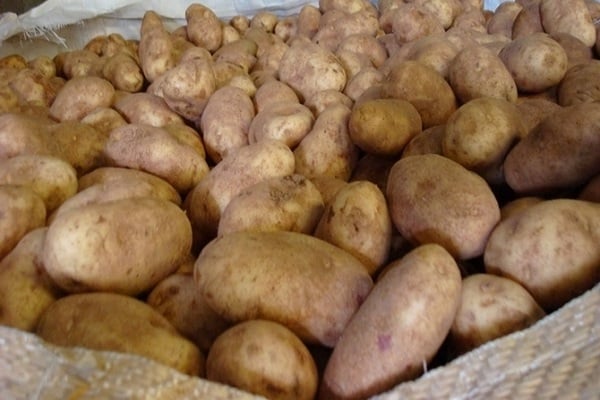
Characteristics of the variety
The tops of this potato can be quite high and spreading, so a gap of 75–85 cm should be left between the rows, and about 30–35 cm between the plants in a row. After 1.5 months, they begin to selectively dig in the tubers for food. 3 months after planting in the ground, the potatoes are fully ripe and can be harvested for winter storage.
The peculiarities of the tubers are that they are oval in shape, the eyes are shallow, and the peel is rough and yellow. The pulp of the tubers is also yellow. When ripe, the weight of one potato leaves 85-135 grams. They have an average starch content (13.4-17%).
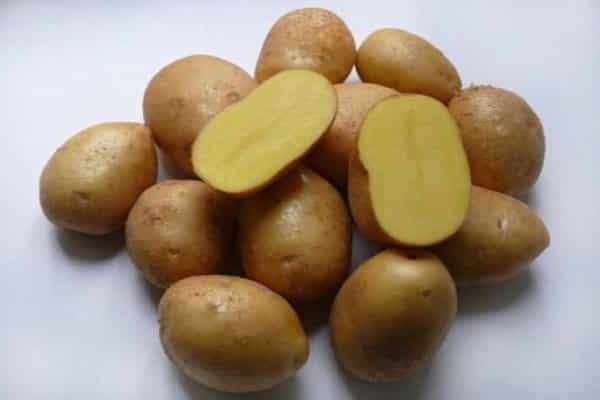
One Jelly bush can produce about 15 potatoes. The yield per hectare in the industrial production of this variety of potatoes is 156-292 centners. On small household plots with 1 m2 collect 3.5-4.5 kg of tubers.
This varietal potato has good keeping quality. Tubers do not lose their presentation for a long time. Ripe tubers calmly endure winter time. In case of mechanical damage, the sections are quickly tightened.
The description of the variety indicates that this tuber is resistant to the cyst-forming golden nematode, as well as to the causative agent of potato cancer. Both tops and tubers are moderately susceptible to late blight.
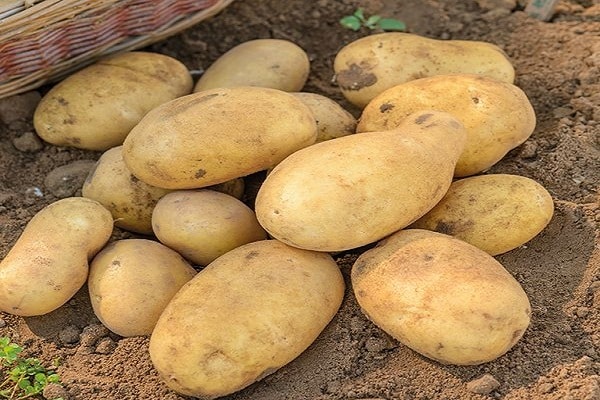
Growing rules
Potatoes for normal development and growth necessarily require fertilizers:
- nitrogen;
- potash;
- phosphorus-containing.
It is also necessary to provide for the introduction of magnesium, calcium and other elements. On average 1 m2 make 5-7 kg of humus or compost, 30-40 g of superphosphate and 15-20 g of potassium sulfate. For light soil, less fertilizer is required, and for heavy loamy soils, an increased amount. They are brought in during the autumn digging of the earth.

The tubers need oxygen access. Not only the crop yield depends on this, but also its taste. To lighten the soil and increase its air permeability, sand is added to the beds before planting potatoes (10-15 kg per 1 m2).This is also facilitated by an increase in the dose of compost applied to loamy soils. To facilitate the access of air to the root crops, regular hilling planted potatoes.
This plant needs enough light for normal development. Therefore, it is planted only in open areas without shading.

During the dry season, the Jelly potato variety needs watering. But waterlogging of the soil can cause rotting of root crops. To prevent this from happening, sand is added to the loamy soil (2-3 buckets of sand per 1 m2). It is recommended to dig up heavy soil in the spring. This contributes to its early warming up.
If the groundwater is too close to the surface, then the potatoes are planted in beds that are 15–20 cm high.
Rules for preparing potatoes for seeds
To speed up the first harvest, root crops are germinated before planting in the ground. The selected seed is taken out of the cellar about 1–1.5 months before planting in the soil. For 1 week, the tubers are in the sun. At this time, corned beef is formed in it, contributing to resistance to diseases and pests.
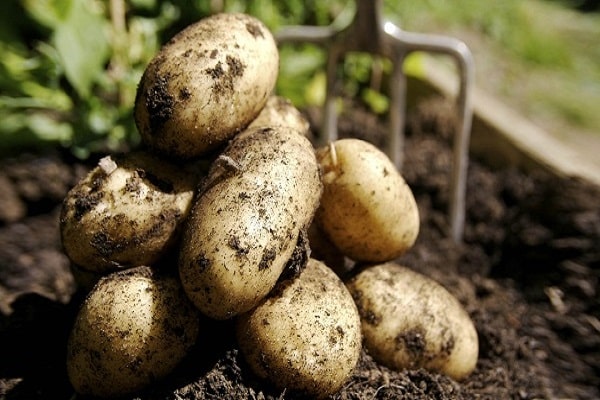
The potatoes are then placed in shallow boxes or plastic containers and placed in a shaded warm room for germination. After about 1 month, small shoots of 1–1.5 cm long appear on the potato.
Large tubers are cut into several parts before planting. In this case, you should pay attention to at least 1 sprout on each part. So that after cutting the potatoes, a putrefactive process does not subsequently form, they are kept for a week until the formation of hardened tissue at the cut sites.
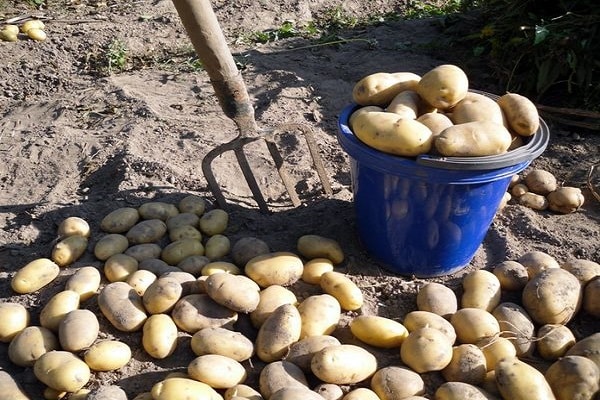
Landing in the ground
Planting potatoes begins after the soil warms up to about 7-8 degrees. Jelly is planted in rows. Sprawling bushes of this variety can interfere with the development of neighboring plants. Therefore, it is recommended to leave aisles of at least 75 cm.
To plant the plants with the same distance between the bushes, the soil is marked first. You can stretch the strings along the planned rows (the distance between them is 75–85 cm). Then a shallow ditch is dug along them and, if necessary, fertilizers are added.
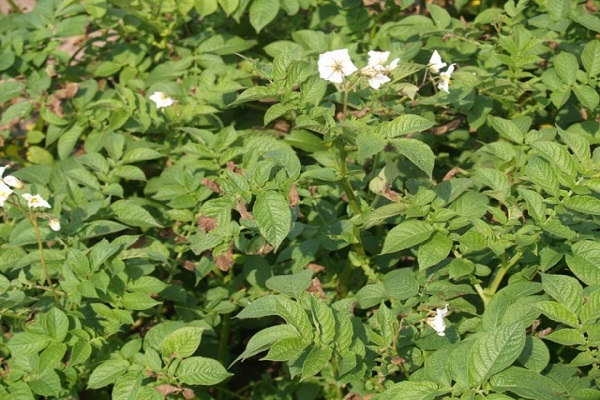
After that, tubers are placed in the furrows at a distance of 25–30 cm from each other. Then the following furrows are made in the same way. In this case, the soil from the subsequent furrows is poured into the first furrows. Some add a handful of onion skins to the hole to scare away pests from the tubers.
After planting potatoes, the soil is harrowed to crush clods and facilitate the emergence process. At the initial stage of plant development, it is recommended to carry out hilling so that possible frosts do not harm young plants. The optimum temperature for growing potatoes is 18-22 degrees. At a higher temperature, the formation of root crops is inhibited.
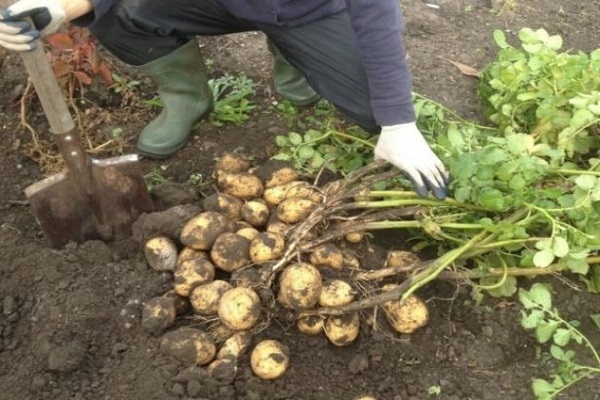
Hilling
Potato tubers are formed on the lateral shoots of the root system. To ensure their growth at a depth, hilling of the bushes is carried out. It is carried out several times per season, once every 7-10 days. If for the first time only the soil is loosened, then the next time the bushes that have grown to 10–12 cm in height are raked with soil so that 4–5 cm of tops remain on the surface. This strengthens and forms the root system and also ensures the formation of new tubers under the soil layer.
If, during the growth process, the tubers protrude above the soil surface, then they will be landscaped under the sun's rays, which will make them unsuitable for human consumption.Also, during hilling, small depressions are made near each bush in order for rainwater to accumulate in them.
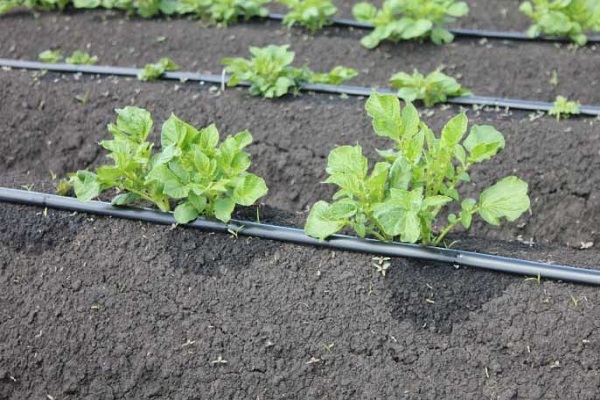
Colorado potato beetle control
Another difficulty with growing potatoes the fight against the Colorado potato beetle is considered. Large plantations are treated with chemicals. In small household plots, young beetle larvae are shaken off by hand into a bucket. This is not a difficult procedure, but it requires regularity.
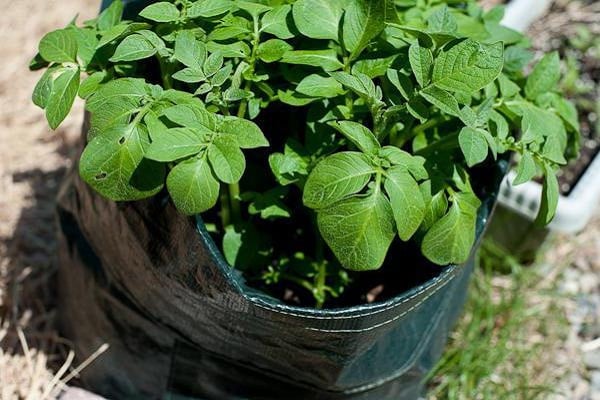
Appearance of late blight
In rainy weather conditions, the Jelly variety can infect late blight. To prevent this phenomenon, at the time of the appearance of small brown spots on the leaves, the tops are sprayed with Chlorine Oxide or Osksychom. During the season, such processing is carried out 2-3 times, but the last should be no later than 20 days before harvesting. The tops affected by late blight are mowed and removed from the site, and the tubers are dug out 15 days after that.
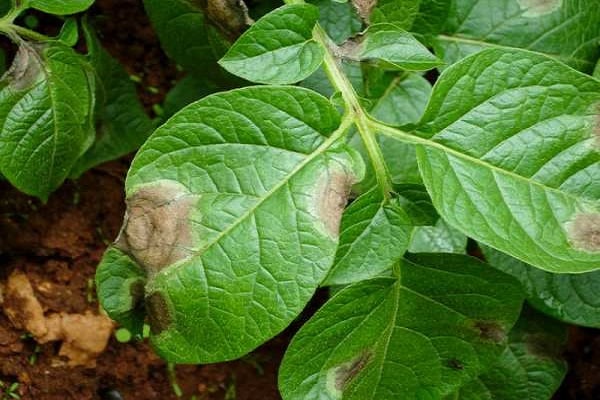
Harvesting
Digging up ripe potatoes is carried out in dry weather, so that the process of drying and laying tubers for storage for the winter is carried out correctly. The crop selected from the beds is dried in a dark barn for 2 weeks, and only then brought into the cellar. During picking, suitable tubers are laid on seeds. Some farmers plant seed under the sun before putting it into the cellar.
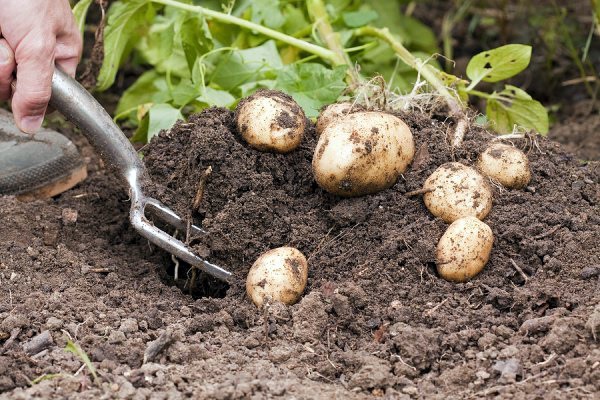
Reviews
Reviews of gardeners also speak about the positive properties of Jelly potatoes:
Elina, 29 years old: “I planted Jelly potatoes on my plot. From five planted tubers in the fall, I collected almost a bucket of potatoes. She has a pleasant taste and a smooth shape without deep eyes. "
Mikhail, 59 years old: “I was satisfied with the planted potatoes. But some bushes were affected by late blight. I advise you to plant the Jelly variety only in dry areas with deep groundwater. "
